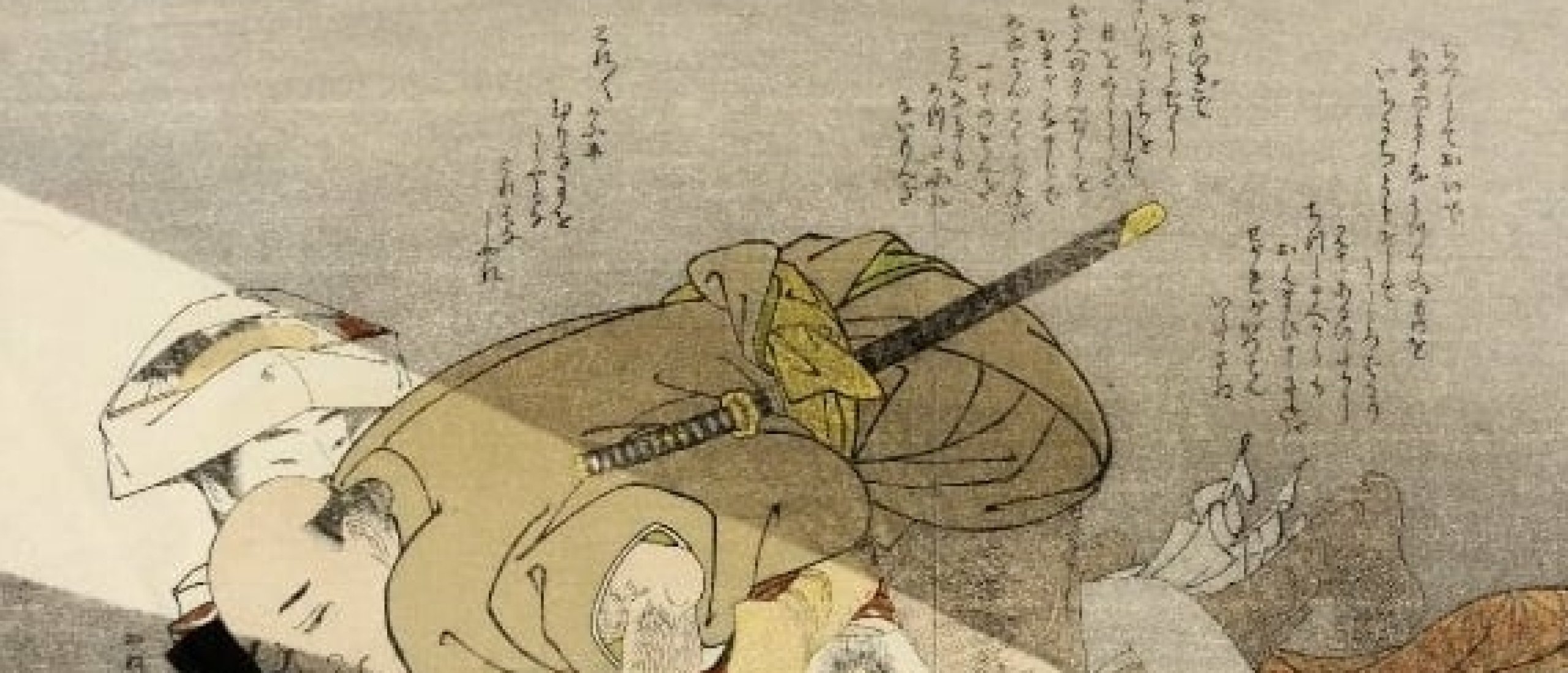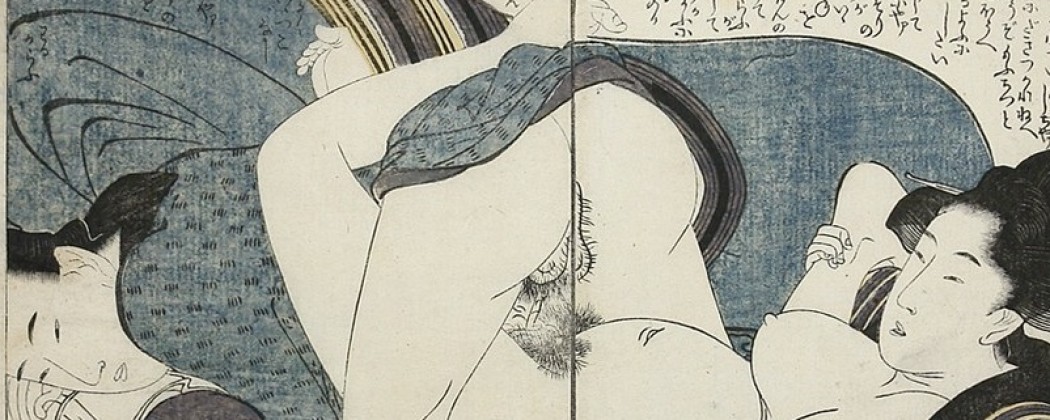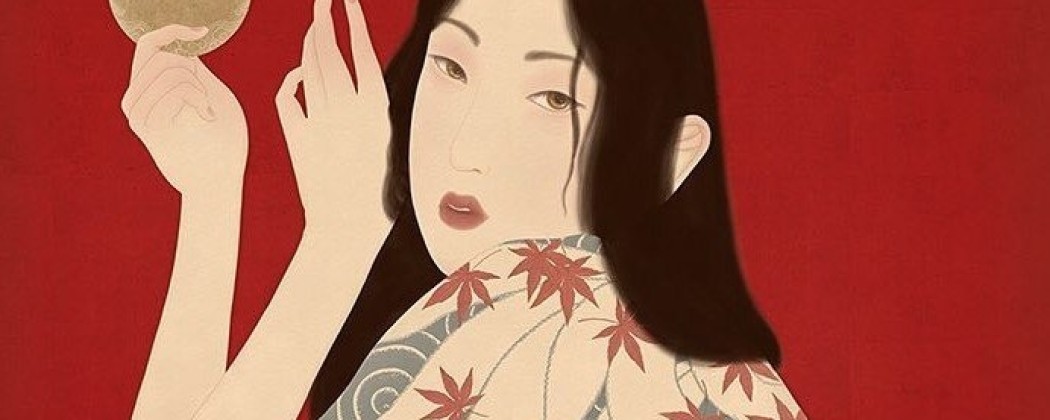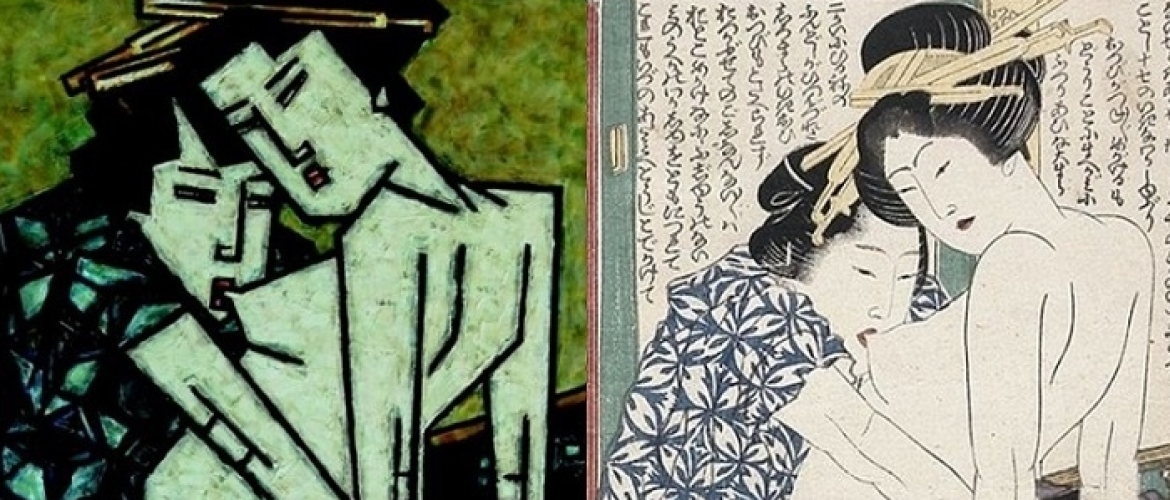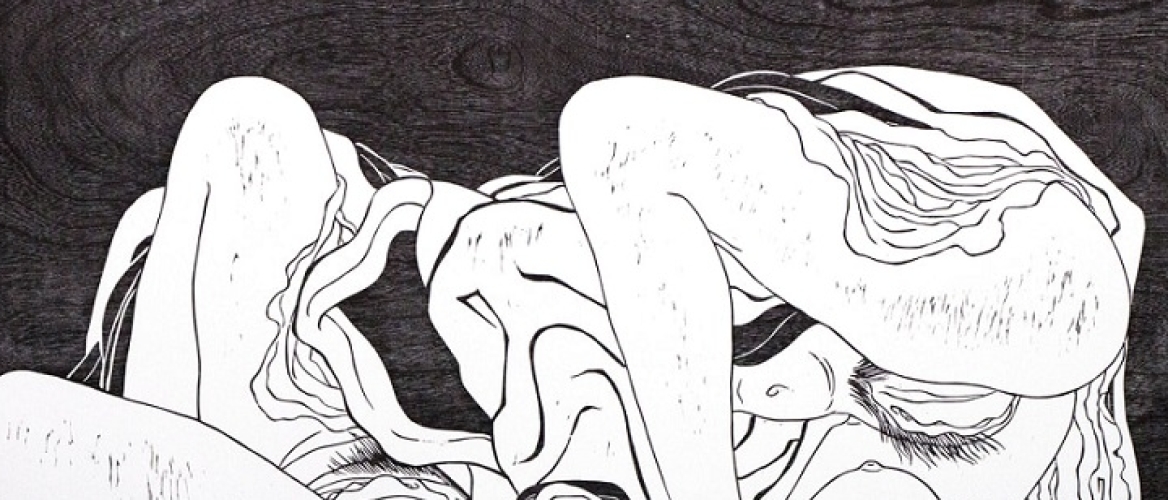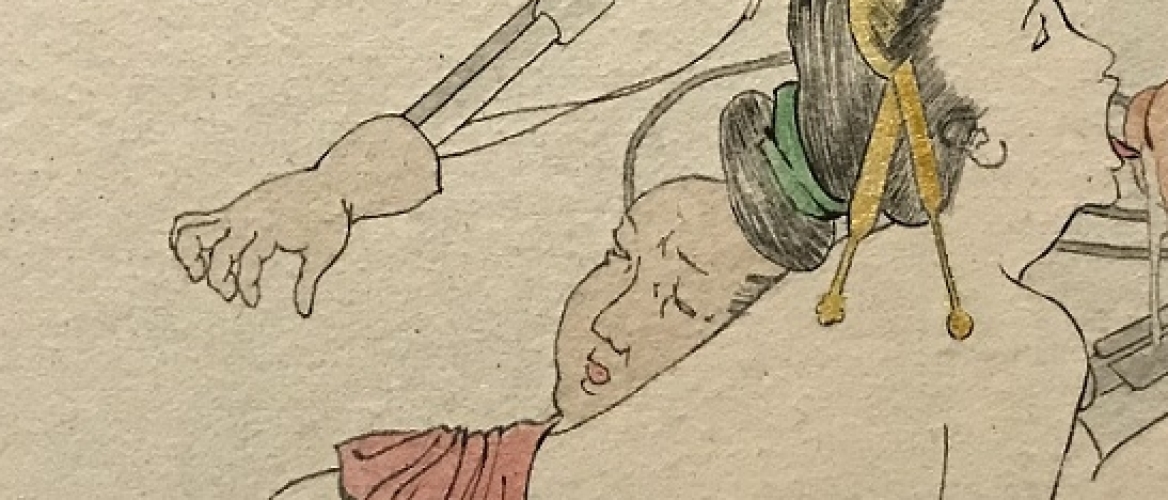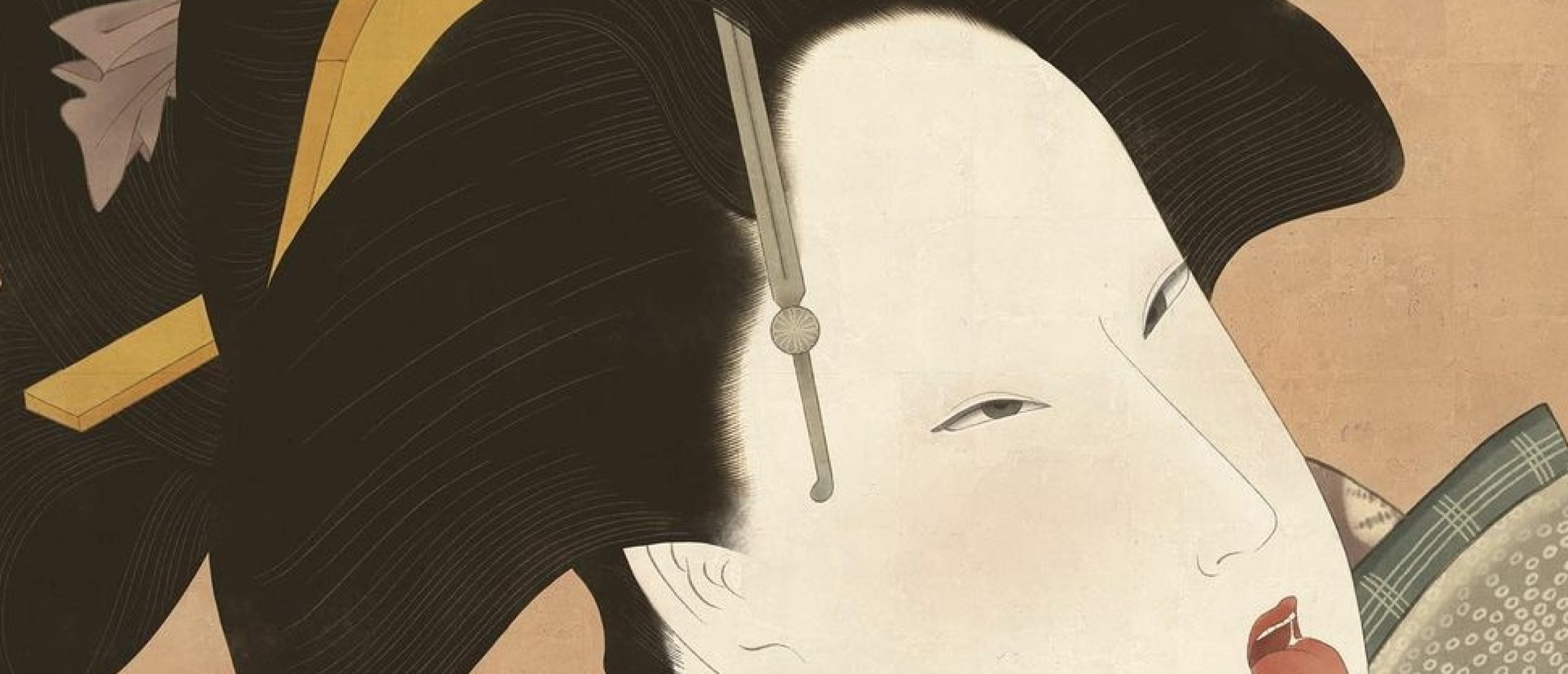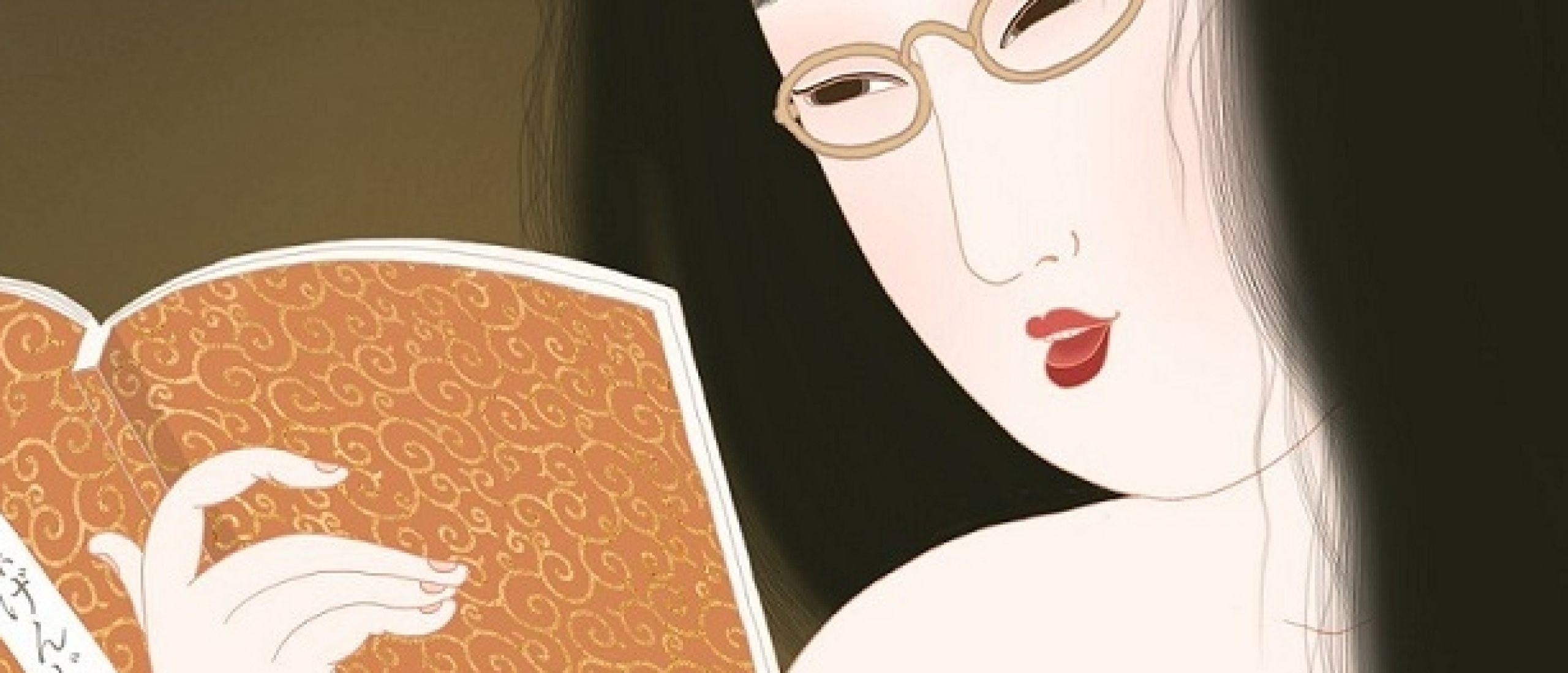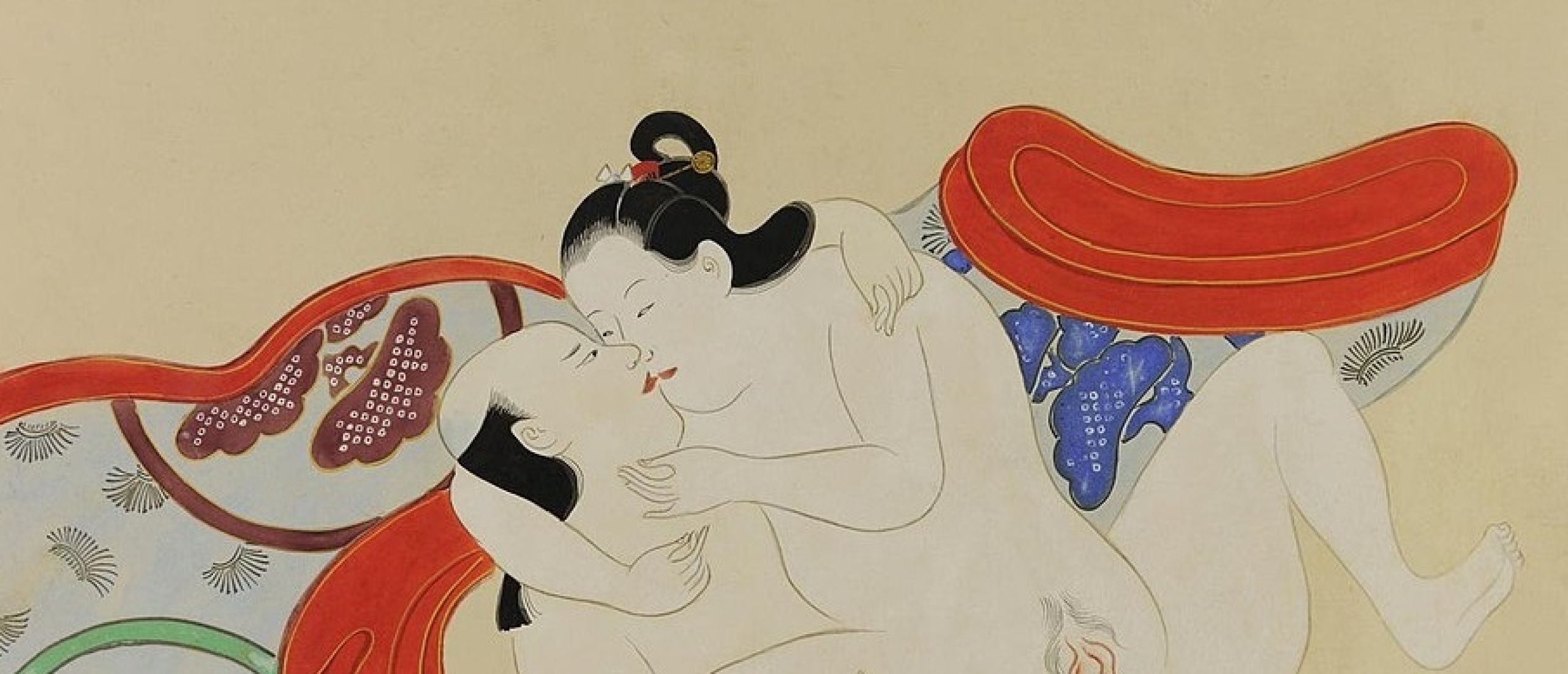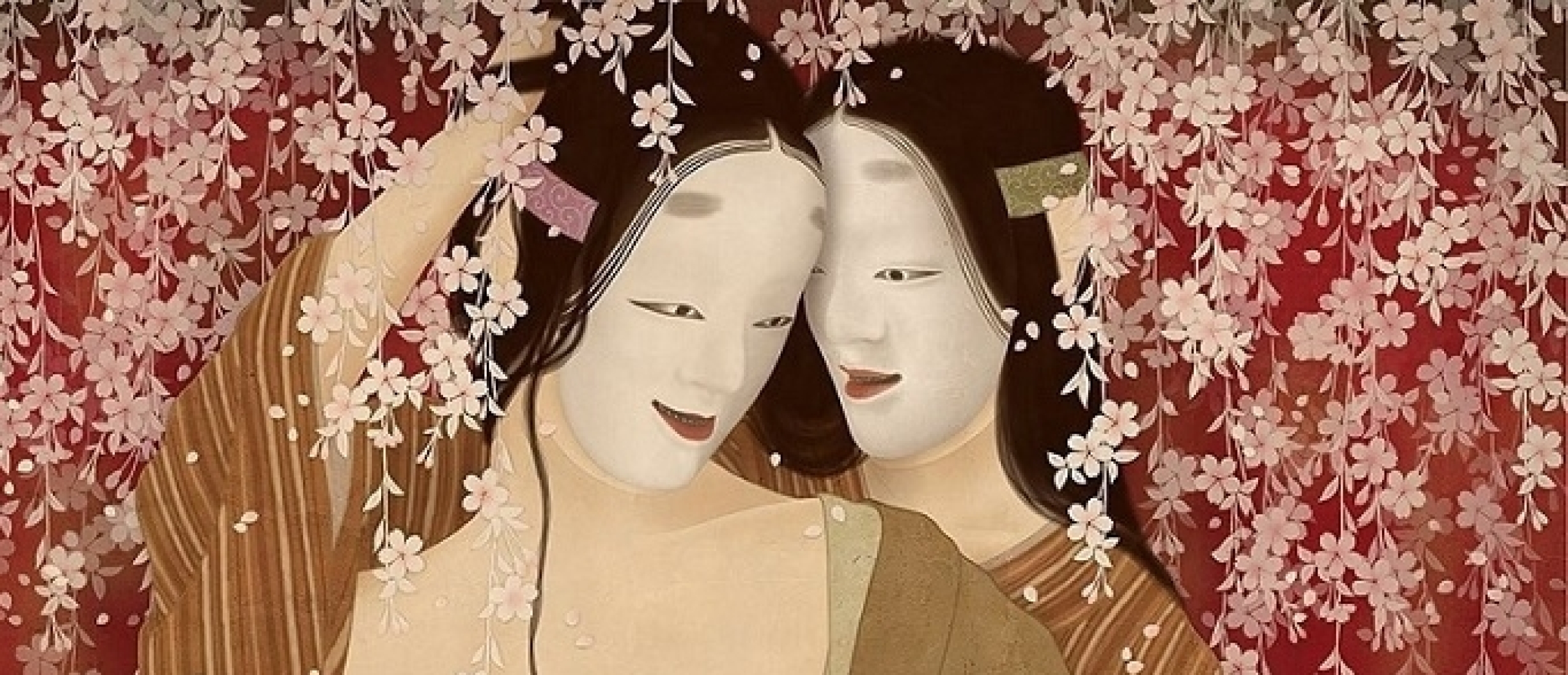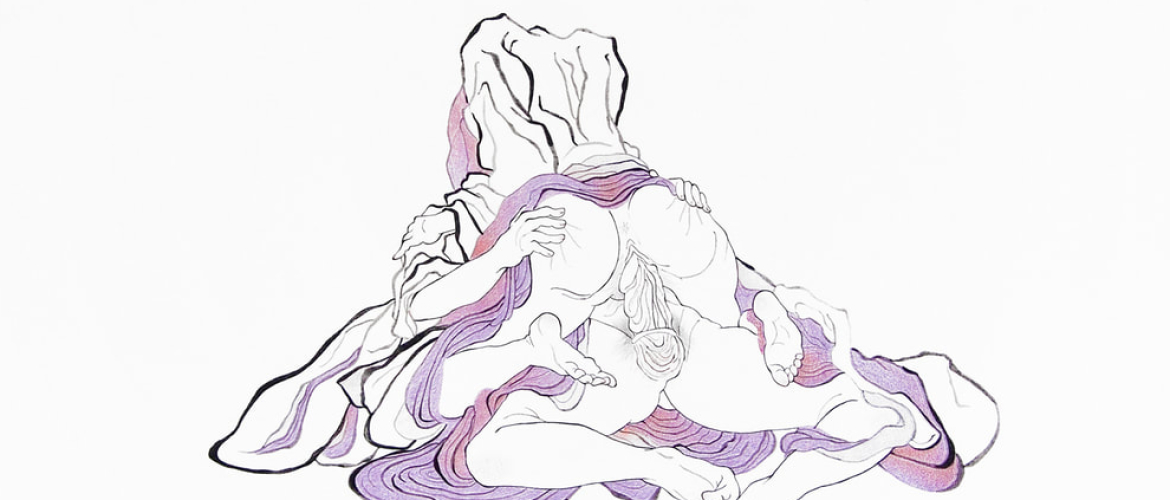
As a follow-up to our much-read article from last April, Shunga Gallery interviews the contemporary shunga artist Aiko Robinson. In the interview you’ll discover what makes the artist tick, her background, influences, fascination with shunga and off course the mystery behind the headless figures in her work…
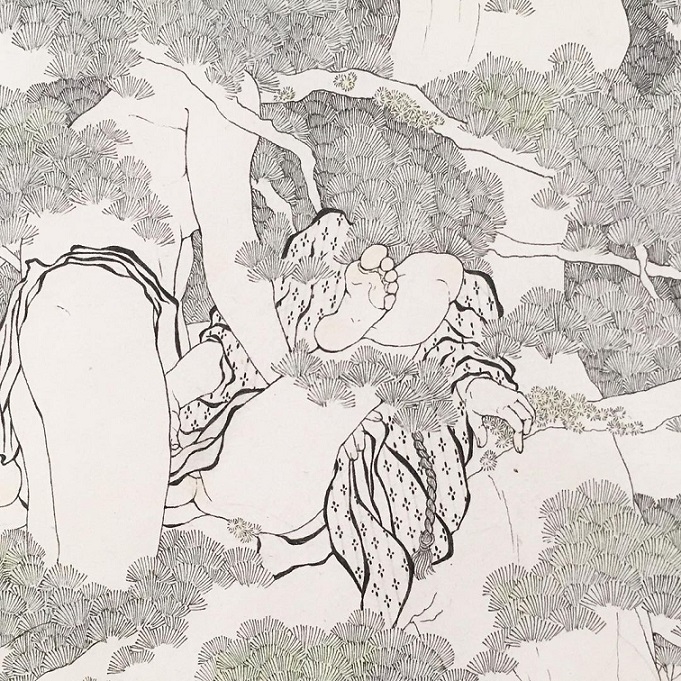
1) Can you tell something about yourself? Your background, education…etc.?
Aiko Robinson: I was born in Christchurch, New Zealand in 1993 to a New Zealand European father and Japanese mother. I grew up speaking both English and Japanese. I attended a Japanese supplementary school on weekends. Spending time with the Japanese community in Christchurch was always very important to my family. I loved going to visit my relatives in Japan every 2-3 years. I’d always dreamed of living in Japan. I had intended to move to Japan after completing my Fine Art studies at Auckland University in 2014. I never expected that my artwork would interest galleries and was surprised when I had offers of exhibitions and an artist residency at Auckland Print Studio. I decided to stay in New Zealand and work on my art. In 2017 I was offered a scholarship to study at Tokyo University of the Arts and finally made the move to Japan. I studied there for 3 years completing my Masters in Fine Art in printmaking in March 2020
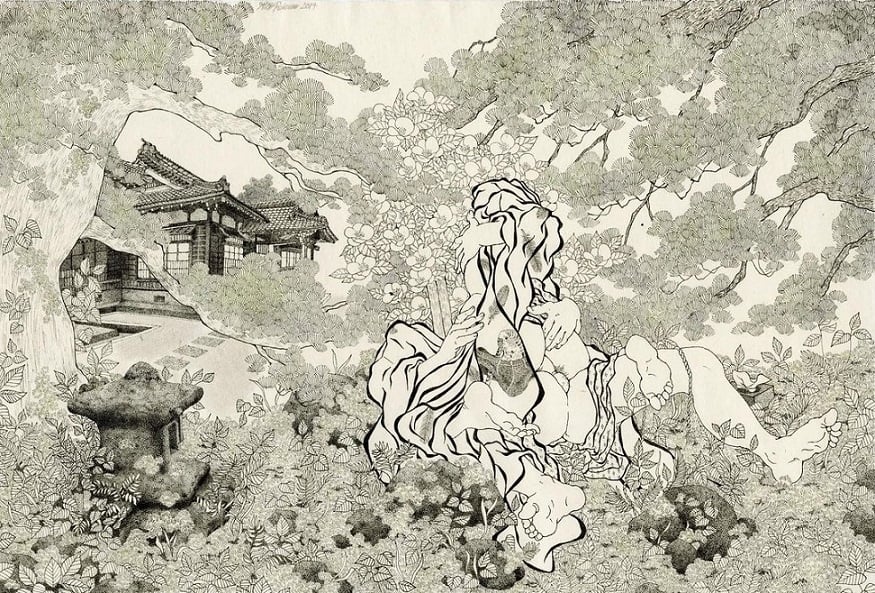
Drawing ‘Smuggling Budgies in the Garden‘ (2017)
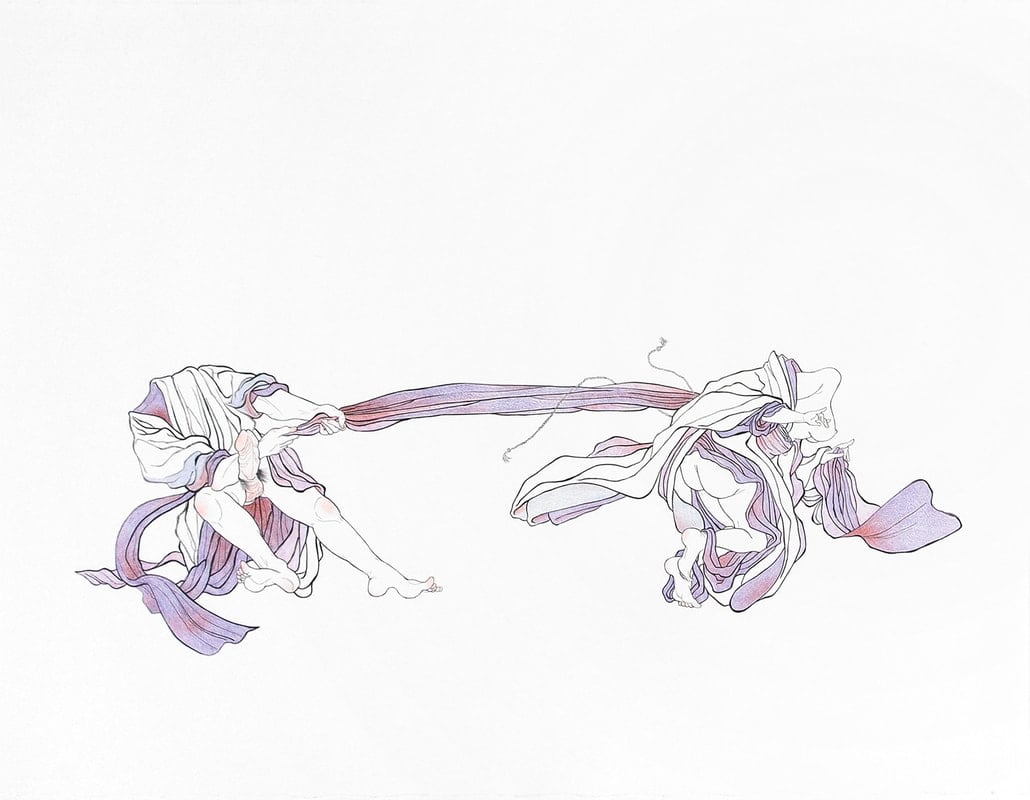
‘Obimawashi: “Aaaah-reeee!” (2015) from the series ‘Love is Blind‘
2) One of the most compelling questions concerning your work is about the inclusion of the ‘headless’ figures. What is the motive behind this?
AR: There are few reasons for my decision to leave the heads out of the composition… In 2013 my tutor Imogen Taylor, a renowned painter in New Zealand, told me that she found the heads “distracting” and suggested I “get rid of them”. I noticed a lot of the figures depicted in shunga have rather mask-like features with very little emotion. I found myself focusing not on the face but more on things like the patterns and folds of the kimono, the glimpses of the body particularly the hands and feet and of course the genitalia. It turned out “getting rid of” the heads worked really well for me compositionally and over time it has developed conceptually too.
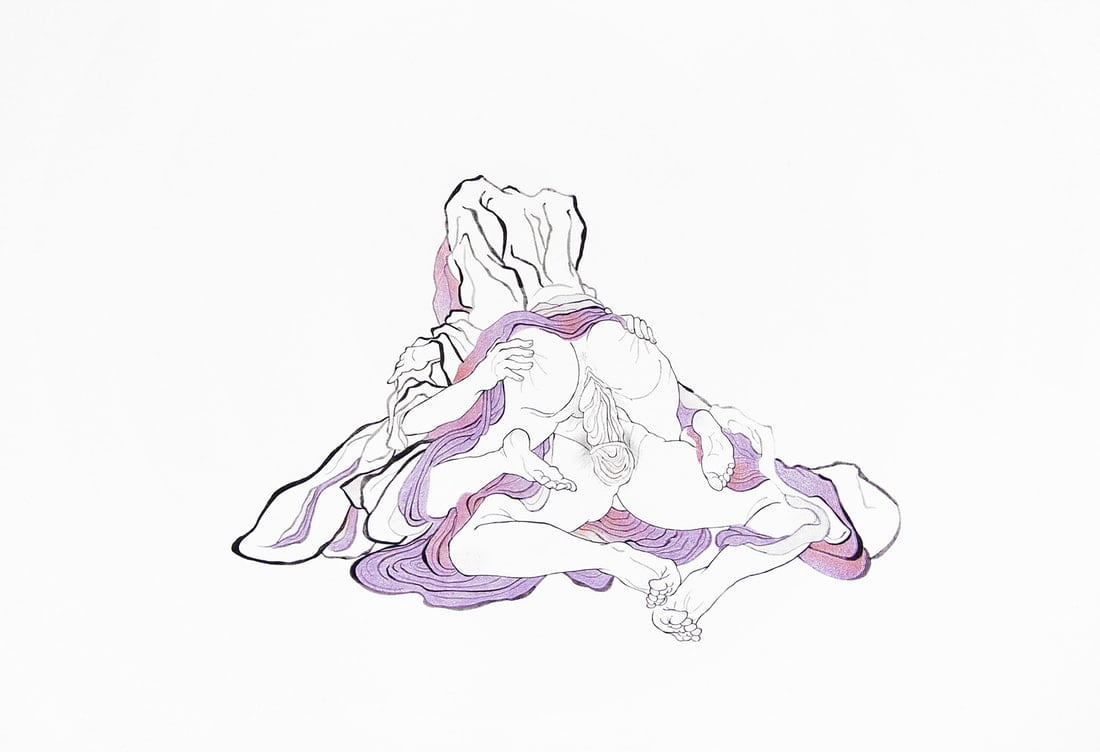
‘Like a single star at sunset‘ (2015) from the series ‘Love is Blind‘
Compositionally I find the absence of the heads interesting because in some cases it seems to take longer for the viewer to recognise what is going on in the image encouraging them to spend more time looking at the work. I noticed during that bold erotic statements can often scare the viewer away. I want to draw my viewers in with these strange compositions. I also create intricate details in the patterning of the fabric and the scenery behind the figures for the same reason.
I love the quote by Shakespeare “Love is blind”, which I have used as a title on a number of occasions. It alludes to passion and romance, but it is also a joke on the physical state of my figures which I depict with no face, and therefore no ability to see.
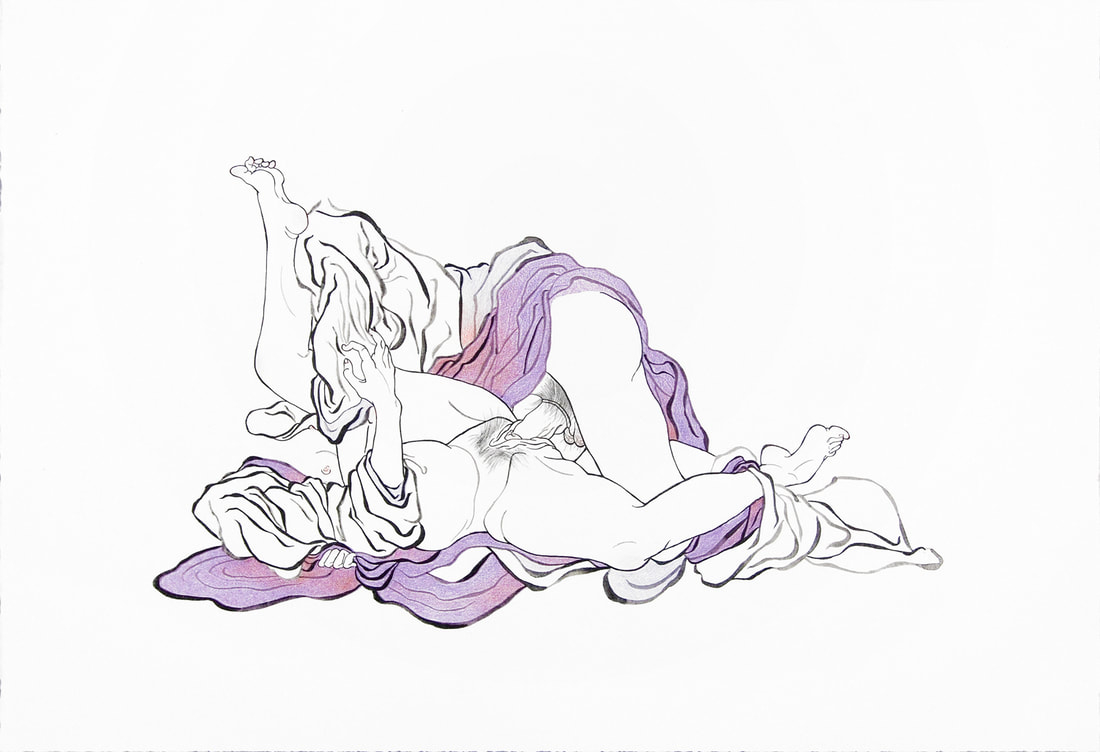
‘Like a bud glistening with morning dew‘ (2015) from the series ‘Love is Blind‘
I am also hesitant to give the figures any specific identity. I leave the figures colorless (by which I mean the figure is the color of the paper) for the same reason. I leave the identity ambiguous because I don’t want to risk offending my viewers by sexualising certain people or communities. I also think that it allows people to insert their own imagination and narrative into the work.

‘Like an Orchid‘ from the series ‘Afternoon Delight‘
3) How did you come into contact with shunga? Was there a specific design or painting that drew your attention?
AR: I discovered shunga during my third year of my undergraduate degree at the University of Auckland. My tutor at the time described my work as being “too cute”, “too safe” and “too feminine”. In rebellion I came back the following day with erotic drawings inspired by shunga. I don’t think it was any particular work that drew my attention, but I was completely captivated by the images of shunga I found in a book of ukiyo-e at the fine art library on campus.
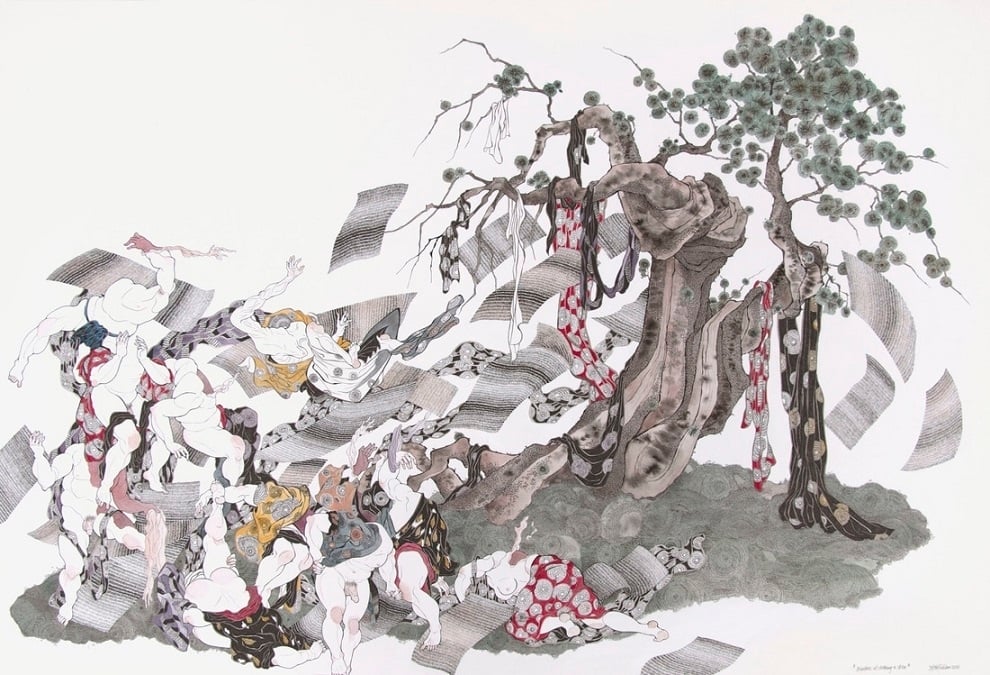
‘Burdens of Clothing and Skin‘ (2016) from the series ‘Last Judgement‘
4) What appeals to you in shunga?
AR: On a purely aesthetic note the compositions, the fine lines and the patterns are so beautiful. Most of all it is the skillful craftsmanship and the fact that these fine lines and intricate details have been carved.
As a female artist living in the 21st century I am also amazed by the open mindedness of shunga compared with other cultures at the time. Shunga, which literally translates to “Spring pictures” is also positively associated with the season of fertility and new life. Historical shunga reflects the acceptance or celebration of sex in Shinto culture, and values love, mutual pleasure and equality between sexual partners.
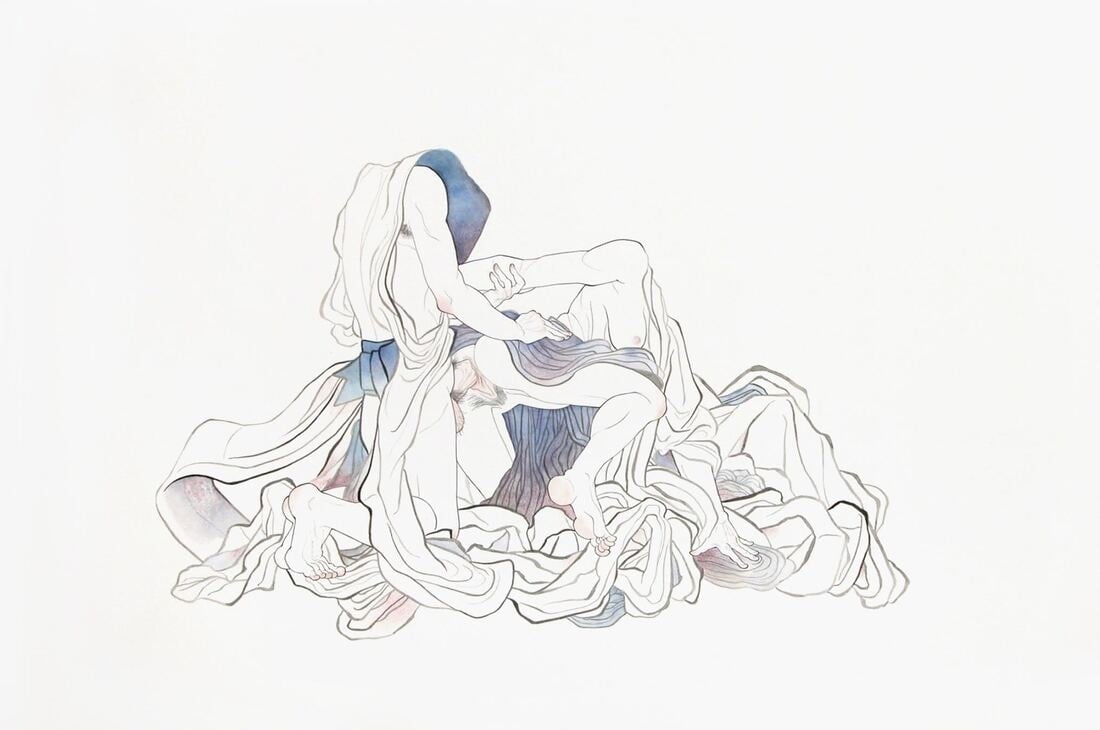
‘Like overflowing waterfalls‘ (2015) from the series ‘Pillowed on Water‘
5) Who is your favorite shunga artist(s) and why?
AR: I love Kitagawa Utamaro, in particular number 10 of 12 from his “Poem of the pillow” series. It shows a man and woman kissing in a reclined position. There is not a lot of nudity in the work except for a glimpse of the women’s buttocks and thigh. What I love about this composition is the way the woman’s head is turned away from the viewer revealing a sensual neck. The man’s face is mostly obscured by the woman’s hair but if you look closely you can spot a half closed eye through the strands of her hair. I love Utamaro’s works because of their softness. The lines are fluid and smooth and they suggest a more gentle love making.
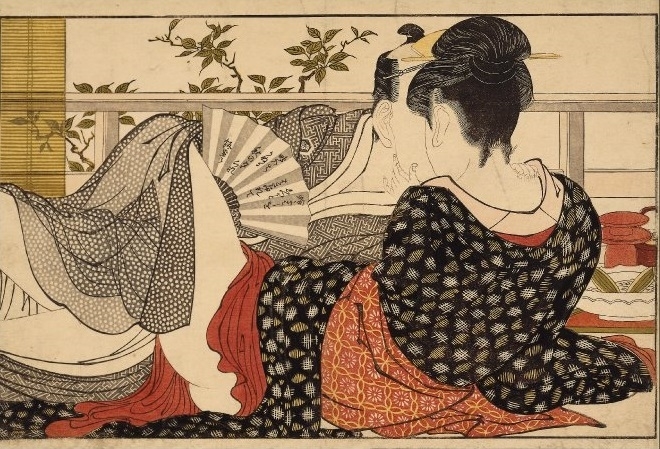
Plate 10: ‘Lovers in a private room in a teahouse‘ (1788) from the series ‘Poem of the Pillow‘ by Kitagawa Utamaro
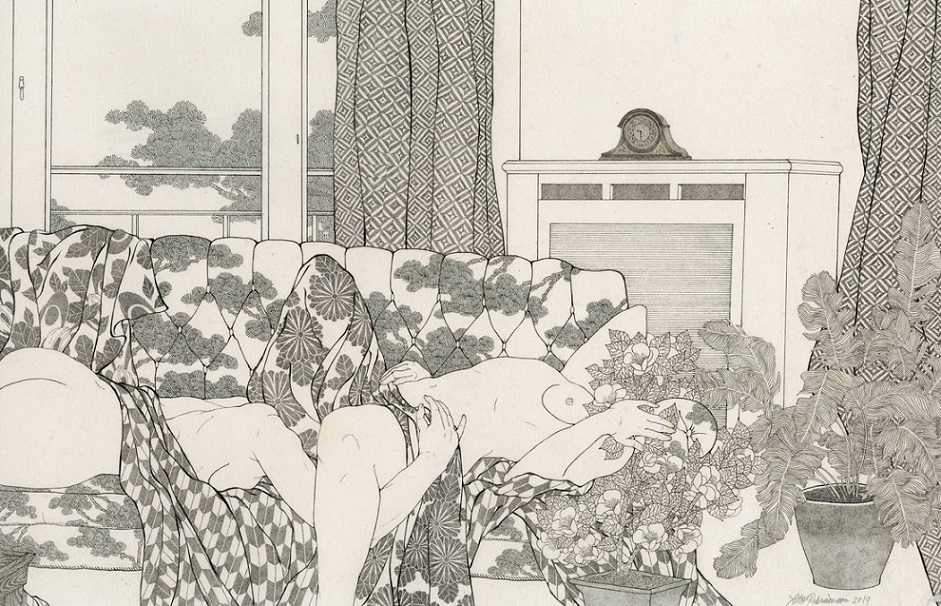
Drawing 2019
6) One of our members wonders if there are any surrealists that inspired your work?
AR: I haven’t actively researched the surrealists … though I do remember one of my friends telling me that my wooden screens I made in 2014 reminded them of Francis Bacon. Perhaps the absence of the head/ face in my works could also be likened to René Magritte’s series “The lovers”.
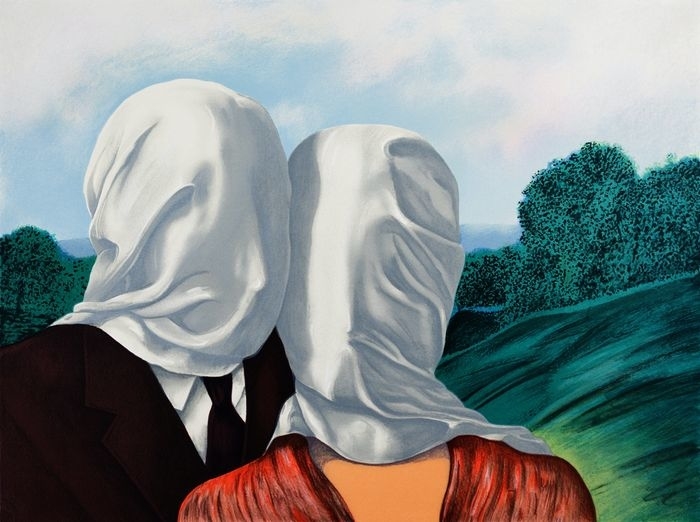
Lithograph (after 1966 painting) ‘Les Amants (The Lovers)‘ by René Magritte
7) Who are your most important influences?
AR: Well of course I’m inspired by Ukiyo-e and Shunga. I am also a huge fan of Gustave Klimt, Egon Schiele, Aubrey Beardsley and William Morris. Some contemporary artists I am inspired by include Teraoka Masami, Francis Upritchard and Kushana Bush. I have for a long time enjoyed monochrome drawings but have recently introduced color in my work again. I have found nature particularly inspiring for my color palette and my recent move to Perth Australia in February 2021 has been particularly inspiring.
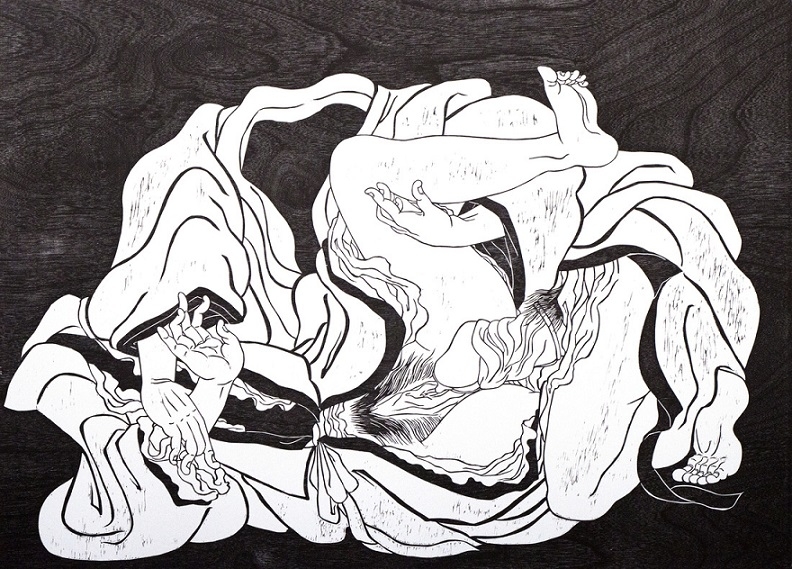
‘Love is blind‘ (2014) from the series ‘Head Over Heels‘
On Aiko’s site you can check out much more of her work…!!
All images are courtesy of Aiko Robinson.
Click HERE for more interviews we had with other sensual artists….!!
Let us know your thoughts on the interview or the work of the artist in the comment box below….!!

